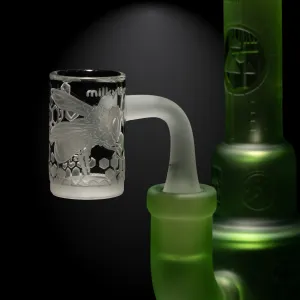Unveiling the Rich History of the Bong: A Journey through Time and Cultures
by milkywayglass / February 10, 2024 / Information / 4 min read
The bong, a ubiquitous smoking device renowned for its water filtration mechanism, has a history as diverse and fascinating as the cultures that embraced it. From ancient rituals in Asia to the counterculture movements of the 20th century, the evolution of the bong reflects the intertwining threads of cultural practices, technological advancements, and changing attitudes towards smoking substances. In this article, we embark on a journey through time to explore the intriguing history of the bong.
Ancient Roots in Asia
The roots of the bong reach deep into the annals of history, finding their earliest expressions in ancient Asia. Archaeological evidence suggests that over 2,000 years ago, inhabitants of regions like China and Thailand were already using primitive water pipes for smoking rituals. These early devices, often crafted from bamboo and other locally available materials, laid the foundation for the bong’s evolution.
In these ancient Asian cultures, the use of water pipes served both practical and symbolic purposes. The cooling and filtration effects of water not only made the smoking experience smoother but were also believed to purify the smoke, adding a ritualistic element to the act of smoking.
African Influences and Early Materials
As we continue our journey, we encounter evidence of water pipes being used in Africa, particularly in Ethiopia. Unlike the bamboo constructions of Asia, early African pipes were crafted from materials such as animal horns. These ancient smoking devices shed light on the diversity of materials and designs that characterized early bongs across different cultures.
Middle Eastern Elegance: The Rise of the Hookah
Moving westward, the Middle East emerges as a significant hub in the history of water pipes. The hookah, a distinct type of water pipe, originated in the Persian Empire and gained popularity across various Middle Eastern cultures. With its ornate designs and intricate details, the hookah became a symbol of social gatherings and hospitality, introducing an element of luxury to the act of smoking.
European Encounters and Limited Adoption
As trade routes expanded and cultures collided, the use of water pipes spread to Europe. However, unlike in Asia and the Middle East, the adoption of bongs in European cultures was relatively limited. The devices were not as ingrained in European smoking traditions, and their popularity remained more subdued.
The Modern Bong Emerges
The 20th century marked a turning point in the history of the bong as it underwent a series of transformations that would shape its modern identity. Glass, with its transparency and ease of cleaning, emerged as a favored material for crafting bongs. This shift marked a departure from the traditional use of bamboo, animal horns, and other materials.
The counterculture movements of the 1960s and 1970s played a pivotal role in popularizing the bong. As attitudes towards cannabis evolved, the bong became an iconic symbol of the burgeoning hippie culture. Its association with alternative lifestyles and the recreational use of cannabis cemented its status as an emblem of rebellion.
Contemporary Bongs: A Kaleidoscope of Innovation
In the contemporary era, bongs have evolved into a diverse array of shapes, sizes, and designs. Glassblowing techniques have reached new heights, allowing for intricate and artistic bong creations. The market offers bongs with multiple chambers, percolators, and ice catchers, each designed to enhance the smoking experience.
Milkyway was established in 2019 and has come to the forefront of the industry for design and quality. We’re known for our deep sandblasting and double layer techniques. We look to continue innovating in a product that is hundreds of years old.
Conclusion
The history of the bong is a fascinating tapestry woven with threads of ancient rituals, cultural exchanges, and societal shifts. From its humble beginnings in Asia to the elaborate hookahs of the Middle East and the counterculture movements of the 20th century, the bong has endured and evolved. Today, it stands not only as a smoking device but also as a cultural artifact, reflecting the dynamic interplay between tradition and innovation throughout the ages. As we explore the history of the bong, we gain a deeper appreciation for the cultural significance and timeless allure of this iconic smoking apparatus.





